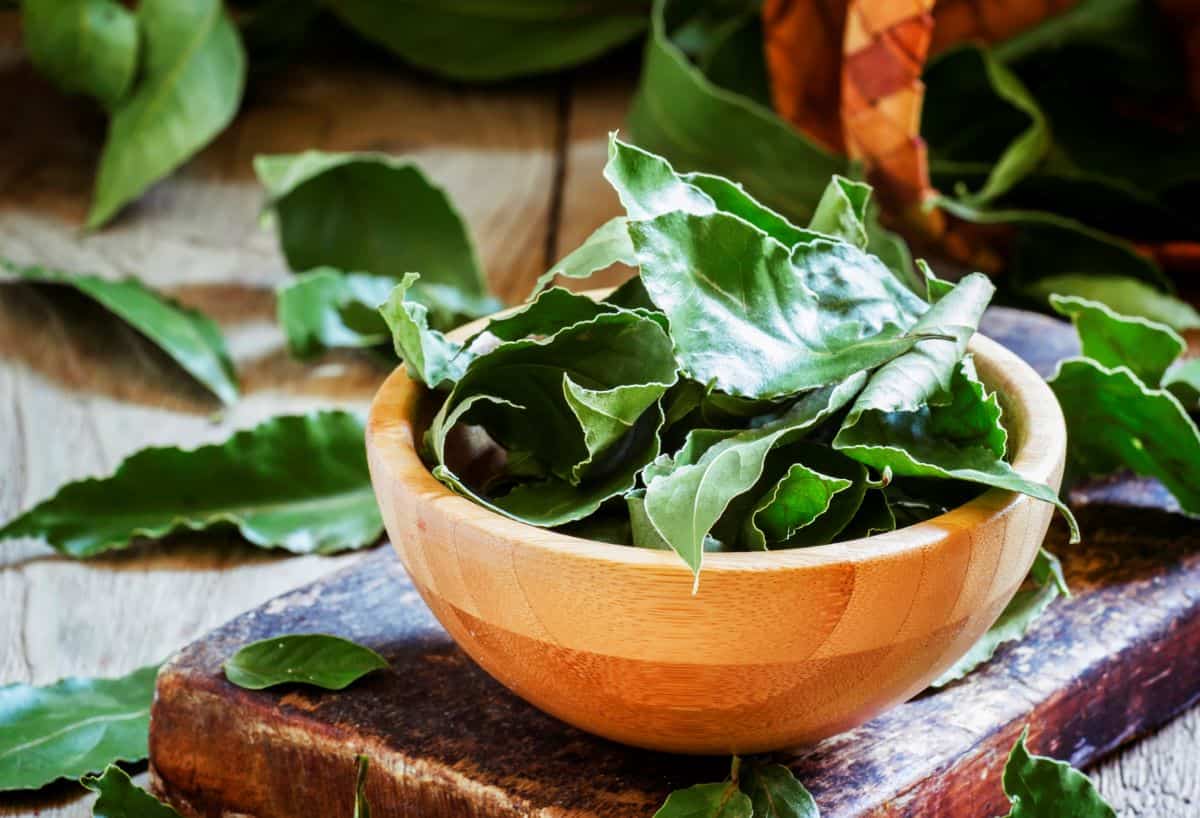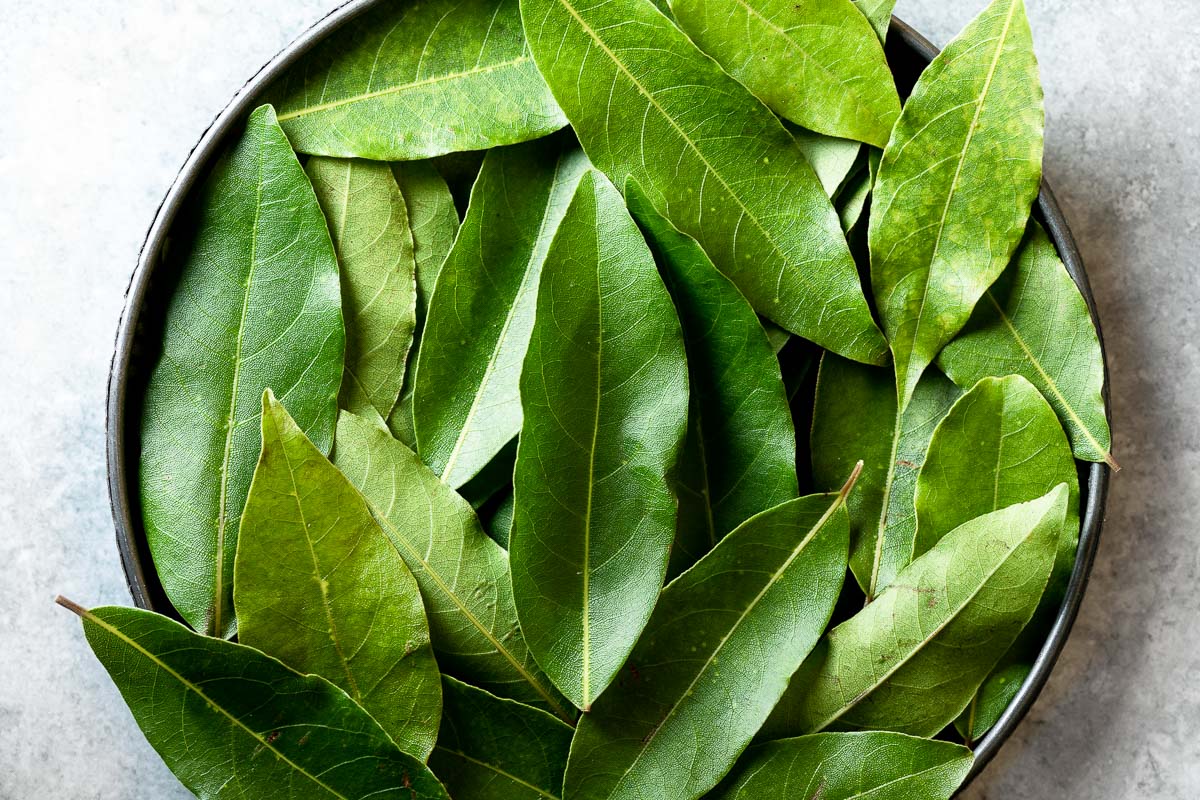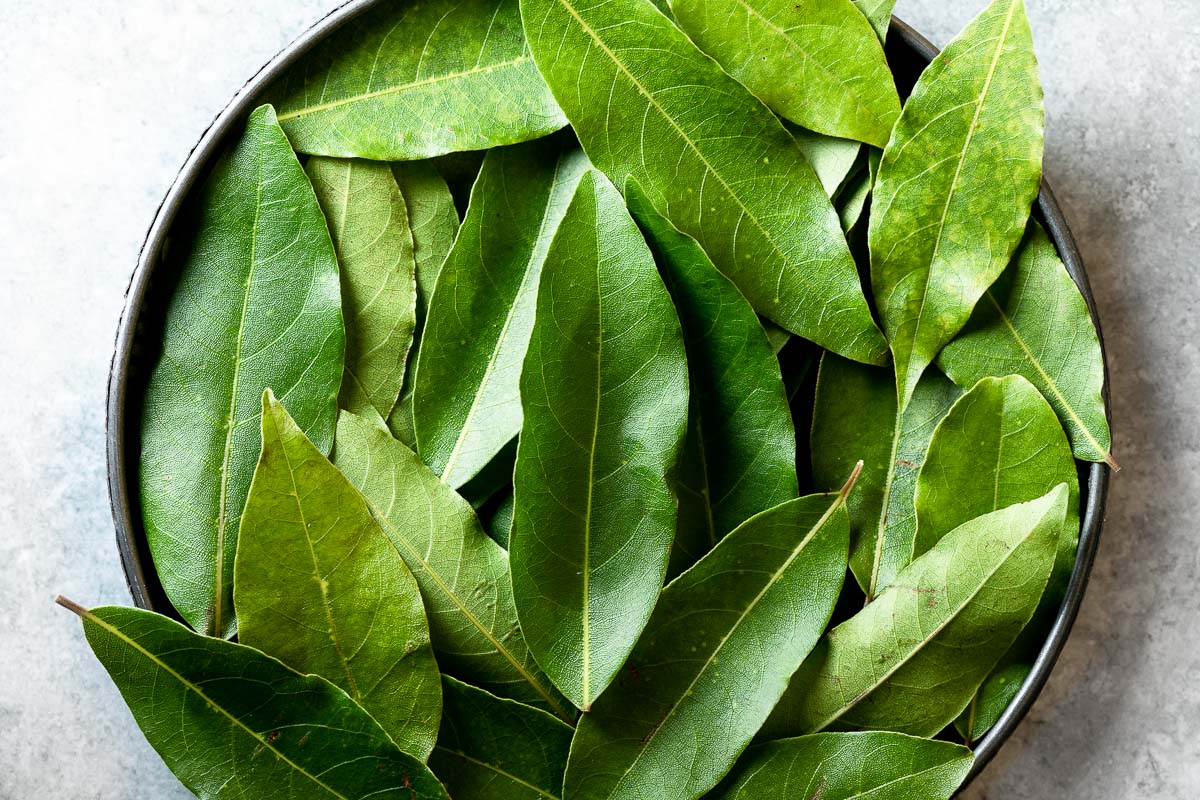How to Replace Bay Leaves and Still Make Flavorful Dishes? It’s a question that often arises when a recipe calls for this essential ingredient, but you find yourself without it. Bay leaves, with their distinctive aroma and flavor, have been a staple in culinary traditions worldwide for centuries.
However, knowing how to substitute them effectively can open up a world of culinary possibilities and ensure that your dishes retain their delicious depth.
This guide will explore the unique flavor profile of bay leaves, identify common substitutes, and provide practical tips for incorporating them into your recipes. We’ll delve into the specific nuances of substituting bay leaves in different dishes, offering insights into the best choices for achieving the desired flavor profile.
Finally, we’ll explore alternative flavoring techniques that can create similar effects without relying on bay leaves at all.
Understanding Bay Leaf Flavor: How To Replace Bay Leaves And Still Make Flavorful Dishes
Bay leaves are a staple in many cuisines, adding a unique and complex flavor to dishes. Their aroma is often described as earthy, slightly bitter, and slightly camphoraceous.
Bay Leaf Flavor Profile
The flavor of bay leaves is a result of their essential oils, which contain various aromatic compounds, including eugenol, cineole, and linalool. These compounds contribute to the distinct aroma and flavor of bay leaves, making them a versatile ingredient in cooking.
Culinary Uses of Bay Leaves
Bay leaves are widely used in various cuisines worldwide, adding depth and complexity to dishes. They are commonly used in:
- Mediterranean Cuisine:Bay leaves are essential in dishes like Greek Moussaka, Italian Bolognese sauce, and Spanish Paella.
- French Cuisine:Bay leaves are used in classic French dishes like Bouillabaisse (a fish stew), Coq au Vin (chicken stew), and Pot au Feu (a slow-cooked beef stew).
- Asian Cuisine:Bay leaves are used in Vietnamese Pho, Thai Green Curry, and Chinese stir-fries.
- Indian Cuisine:Bay leaves are used in many Indian curries and stews, often alongside other spices like cumin, coriander, and turmeric.
Dishes that Commonly Feature Bay Leaves
Here are some examples of dishes that commonly feature bay leaves:
- Soups and Stews:Bay leaves add a warm, earthy flavor to soups and stews, enhancing the overall taste.
- Sauces:Bay leaves are used in sauces like tomato sauce, béchamel sauce, and gravy, adding complexity and depth to the flavor profile.
- Meat Dishes:Bay leaves are often added to roasted meats, braised meats, and stews, adding a savory and aromatic flavor.
- Vegetable Dishes:Bay leaves can be used in vegetable dishes like braised greens, roasted vegetables, and stews.
- Pickles and Preserves:Bay leaves are often added to pickles and preserves, adding a unique and slightly bitter flavor.
Bay Leaf Substitutes

While bay leaves are a staple in many cuisines, there are times when they might not be available or you might want to experiment with different flavor profiles. Fortunately, there are numerous herbs and spices that can be used as substitutes, each bringing its unique character to the dish.
Common Bay Leaf Substitutes
Understanding the flavor profiles of these substitutes can help you choose the best option for your recipe.
- Thyme: With its earthy and slightly peppery notes, thyme offers a similar warmth to bay leaves, making it a suitable substitute in savory dishes like soups, stews, and roasts.
- Rosemary: Known for its pungent, pine-like aroma, rosemary can be used as a substitute for bay leaves in dishes that require a strong, herbaceous flavor, such as roasted vegetables or meat.
- Sage: Sage has a slightly bitter and earthy flavor, often used in savory dishes like stuffing and poultry. It can provide a similar depth of flavor to bay leaves, especially in dishes with strong flavors.
- Oregano: With its earthy, slightly bitter, and pungent flavor, oregano is a good substitute for bay leaves in dishes that require a more robust flavor, such as tomato sauces or Mediterranean dishes.
Citrusy Substitutes
For a more citrusy twist, consider these options:
- Lemon Zest: Lemon zest offers a bright and citrusy flavor that can complement dishes like fish, chicken, and sauces. It can be used in smaller quantities to achieve a similar effect to bay leaves.
- Orange Zest: Orange zest brings a sweet and citrusy flavor to dishes, making it a suitable substitute for bay leaves in recipes like sauces, marinades, and desserts.
Other Substitutes
Here are some additional options that can provide a unique flavor profile:
- Dried Tarragon: Tarragon has a distinctive licorice-like flavor that can be used as a substitute for bay leaves in dishes like soups, stews, and sauces.
- Allspice Berries: Allspice berries have a warm, spicy flavor that can be used as a substitute for bay leaves in dishes like stews, curries, and baked goods.
- Black Peppercorns: While not as complex as bay leaves, black peppercorns can add a peppery kick to dishes, making them a suitable substitute for bay leaves in certain recipes.
Tips for Using Bay Leaf Substitutes
- Experiment with Ratios: Bay leaves are often used in small quantities, so start with a small amount of your chosen substitute and adjust to taste.
- Consider Flavor Profiles: Choose substitutes that complement the flavors of your dish. For example, thyme is a good choice for savory dishes, while lemon zest can add a bright citrusy note.
- Remove Before Serving: Some substitutes, like thyme and rosemary, can become bitter if left in the dish for too long. It is generally recommended to remove them before serving.
Substituting Bay Leaves in Recipes
While bay leaves are a common ingredient in many cuisines, there are times when you may need to find a substitute. Perhaps you’re out of bay leaves, have an allergy, or simply want to experiment with different flavors. This section will explore how to effectively substitute bay leaves in your recipes.
Adjusting Recipes for Substitutes
When replacing bay leaves, consider the flavor profile of the substitute and how it will interact with the other ingredients in your dish. Some substitutes may be more potent than bay leaves, so you may need to use less.
For instance, using dried thyme as a substitute for bay leaves in a tomato-based sauce may require a slightly smaller amount of thyme to avoid overpowering the tomato flavor.
Quantity Comparison Table
The following table offers a general guide to substituting bay leaves with other herbs and spices, based on their intensity and flavor profile. | Bay Leaf Quantity | Substitute | Dish Example ||—|—|—|| 1 bay leaf | 1/2 teaspoon dried thyme | Tomato sauce || 1 bay leaf | 1/4 teaspoon dried rosemary | Roasted vegetables || 2 bay leaves | 1/2 teaspoon dried oregano | Beef stew || 1 bay leaf | 1/4 teaspoon ground cloves | Pickled vegetables || 1 bay leaf | 1/2 teaspoon ground allspice | Chicken broth |
While bay leaves offer a distinct savory flavor, there are numerous alternatives to consider if you find yourself without them. Dried herbs like thyme, rosemary, and oregano can add similar depth, and even fresh herbs like parsley or cilantro can be used to create a unique twist.
For a touch of luck in your culinary endeavors, consider incorporating the essence of four-leaf clovers into your cooking, as described in How to Cultivate Four Leaf Clovers and Enjoy Their Luck. Ultimately, the key to flavorful dishes lies in experimenting with different ingredients and finding what works best for your palate.
Common Bay Leaf Substitutes and Their Uses
Here’s a table listing common bay leaf substitutes and their recommended uses, offering a broader perspective on how to use these alternatives effectively.| Substitute | Flavor Profile | Recommended Uses ||—|—|—|| Dried Thyme | Earthy, slightly sweet, with a hint of citrus | Tomato sauces, soups, stews, roasted vegetables || Dried Rosemary | Woody, slightly bitter, with a hint of pine | Roasted meats, vegetables, bread, sauces || Dried Oregano | Earthy, slightly bitter, with a hint of mint | Italian dishes, tomato sauces, pizzas, soups || Ground Cloves | Warm, spicy, with a hint of sweetness | Pickled vegetables, fruit preserves, baked goods || Ground Allspice | Warm, spicy, with a hint of nutmeg | Caribbean dishes, sauces, soups, stews || Dried Tarragon | Anise-like, slightly bitter, with a hint of licorice | French dishes, sauces, soups, fish || Dried Marjoram | Earthy, slightly sweet, with a hint of mint | Italian dishes, soups, stews, roasted vegetables |
Bay Leaf Substitutes for Specific Dishes
While bay leaves are versatile, understanding the nuances of their flavor profile and how they interact with different ingredients is crucial for choosing the right substitute. The ideal replacement depends on the specific dish and the desired flavor profile.
Bay Leaf Substitutes in Soups and Stews
Bay leaves are commonly used in soups and stews to add a warm, earthy, and slightly bitter note. When substituting bay leaves in these dishes, consider the overall flavor profile you aim to achieve.
- For a more robust flavor:Use a combination of dried thyme, rosemary, and oregano. These herbs provide a similar warmth and complexity to bay leaves.
- For a lighter, more subtle flavor:Opt for fresh parsley, dill, or tarragon. These herbs offer a more delicate flavor that complements the other ingredients without overpowering them.
- For a smoky, savory flavor:Consider using smoked paprika or a pinch of smoked salt. These ingredients will add a unique depth of flavor that complements the savory notes of soups and stews.
Bay Leaf Substitutes in Sauces, How to Replace Bay Leaves and Still Make Flavorful Dishes
Bay leaves are often used in sauces to add depth and complexity. Their subtle flavor blends well with various ingredients, creating a harmonious balance.
While bay leaves are a classic for adding depth to dishes, there are plenty of alternatives for those who don’t have them on hand. Fresh herbs like thyme, rosemary, or oregano can provide a similar earthy flavor, while citrus peels, peppercorns, or even a pinch of dried mushrooms can add complexity.
And if you’re looking for a beautiful addition to your kitchen, consider the The Rodgers Plant: Your Secret to a Beautiful Indoor Garden – its vibrant foliage and fragrant blooms will surely brighten your day, and you can even use its leaves to infuse your dishes with a unique and delightful aroma.
No matter what you choose, there’s a way to create flavorful dishes without relying on bay leaves.
- For a classic tomato sauce:Use a combination of dried oregano, basil, and a pinch of sugar. This combination mimics the earthy and slightly sweet notes of bay leaves, enhancing the overall flavor of the sauce.
- For a creamy sauce:Consider using fresh thyme or rosemary. These herbs provide a warm, herbaceous flavor that complements the richness of the cream.
- For a tangy sauce:Use a pinch of dried tarragon or a few sprigs of fresh dill. These herbs offer a bright, slightly peppery flavor that adds complexity to the sauce.
Bay Leaf Substitutes in Marinades
Bay leaves are commonly used in marinades to infuse meat or poultry with a savory, earthy flavor.
- For a Mediterranean-inspired marinade:Use a combination of dried oregano, rosemary, and a pinch of garlic powder. This combination offers a robust, aromatic flavor that complements the earthy notes of bay leaves.
- For a citrus-based marinade:Consider using fresh thyme, rosemary, and a touch of black pepper. These herbs provide a balanced flavor that complements the citrus notes of the marinade.
- For a spicy marinade:Use a combination of dried chili flakes, smoked paprika, and a pinch of cumin. This combination adds a smoky, spicy kick that complements the earthy notes of bay leaves.
Alternative Flavoring Techniques
While bay leaves offer a distinct, earthy flavor, they are not essential for creating flavorful dishes. Many other ingredients can achieve similar flavor profiles, adding depth and complexity to your culinary creations. By understanding the nuances of bay leaf flavor and exploring alternative options, you can expand your culinary repertoire and discover new ways to enhance your dishes.
Utilizing Other Ingredients for Flavor Enhancement
Various ingredients can be used to replicate or enhance the flavor profile of bay leaves. Citrus zest, peppercorns, and fresh herbs are particularly effective in creating complex and aromatic dishes.
- Citrus Zest:Citrus zest, particularly lemon and orange, offers a bright, refreshing, and slightly bitter note that complements savory dishes. It can be used in soups, stews, sauces, and marinades to add a touch of citrusy complexity. For instance, a pinch of lemon zest can enhance the flavor of a tomato-based soup, while orange zest can add a vibrant note to a chicken marinade.
- Peppercorns:Peppercorns, including black, white, pink, and green varieties, provide a pungent and spicy kick that can add depth and complexity to dishes. Black peppercorns are the most common and offer a sharp, earthy flavor. White peppercorns are milder and more subtle, while pink peppercorns have a slightly sweet and fruity note.
Green peppercorns are the least mature and have a peppery and slightly floral flavor. Peppercorns can be used in stews, sauces, marinades, and rubs to add a touch of spice and complexity.
- Fresh Herbs:Fresh herbs are an excellent way to add vibrant and aromatic flavors to dishes. Thyme, rosemary, oregano, sage, and parsley are commonly used to enhance the flavor of soups, stews, sauces, and meat dishes. Thyme offers a warm, earthy, and slightly pungent flavor, while rosemary has a strong, piney, and slightly bitter taste.
Oregano has a pungent, earthy, and slightly bitter flavor, while sage has a warm, earthy, and slightly bitter taste. Parsley offers a fresh, bright, and slightly peppery flavor. Experiment with different combinations of herbs to create unique flavor profiles.
Closing Notes

Mastering the art of replacing bay leaves empowers you to create flavorful dishes even when your pantry is lacking. Whether you’re seeking a subtle earthy note or a touch of citrusy brightness, the right substitute can enhance your culinary creations.
Remember, experimentation is key! Don’t be afraid to try different combinations and explore the vast world of flavor possibilities beyond the traditional bay leaf.
Query Resolution
What is the most common substitute for bay leaves?
Thyme is often considered the most versatile and readily available substitute for bay leaves, offering a similar earthy and slightly pungent flavor.
Are bay leaves essential for all recipes?
While bay leaves are a common ingredient, they are not always essential. Their primary role is to provide a subtle background flavor, and in some cases, their absence may not significantly alter the dish’s taste.
Can I use dried bay leaves instead of fresh?
Dried bay leaves are generally more potent than fresh ones, so use them sparingly. Typically, one dried bay leaf is equivalent to two fresh leaves.
